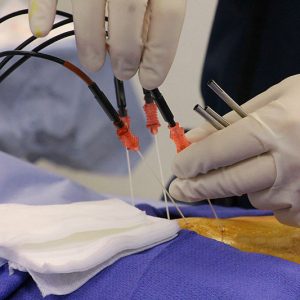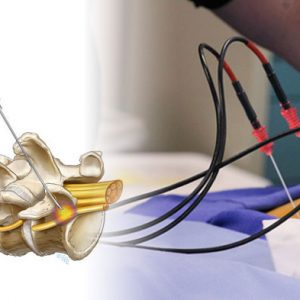
A lumbar radiofrequency neurotomy certainly sounds confusing yet there is no reason for patients to be intimidated by medical semantics. In plain terms, this medical procedure involves the application of heat created through radio waves to zero in on certain nerves, briefly preventing them from transmitting pain signals to the brain. Also referred to as a radiofrequency ablation, this procedure requires the insertion of needles into the skin at the body site where there is a pain to transmit radio waves directly to the nerves.
The doctors use imaging scans during the procedure to ensure the needles are in the perfect position for maximum impact. Though radiofrequency neurotomy is typically used to reduce pain in the lumbar region of the back, the medical procedure can also be used for other parts of the back, the cervical region (the neck), the hips, the knees, and even the sacroiliac joint by the buttocks.
Do not take any medications in the two hours leading up to your lumbar radiofrequency neurotomy.
Furthermore, the doctor advises against using any tobacco products or smoking on the day of the procedure.
This is an outpatient procedure, meaning you can go back home after the surgery is complete.
Let’s shift our attention to the nuances of the actual procedure. The doctor will have you lie flat on your stomach on the x-ray table while wearing a hospital gown. An IV line will be put into your arm or hand to transmit medication that keeps you calm throughout the procedure. The medication is injected into the skin prior to the insertion of radiofrequency needles.
A fluoroscope x-ray machine is used to move the radiofrequency needles to the targeted area, zeroing in on the specific nerves to be treated. Once the procedure is complete, you will be moved to a different room designated for rest. There might be slight soreness in the site where the needle was inserted yet it will dissipate within a couple of days.
The purpose of the lumbar radiofrequency neurotomy is to reduce the pain that has stagnated or worsened after the use of physical therapy and/or medications. This procedure is considered when the patient is not eligible for surgery or when surgery won’t make a meaningful impact in the context of pain mitigation.
Though the lumbar radiofrequency neurotomy does not provide lasting pain relief, it helps to significantly reduce pain. Your level of pain relief hinges on the nuances of your body site as well as your unique biochemistry. Some patients provided with the lumbar radiofrequency neurotomy enjoy short-term pain relief.
Other patients who undergo the procedure feel less pain for multiple months. However, it must be noted there is a slight chance that the lumbar radiofrequency neurotomy will not reduce pain or improve functionality at all.


The doctor might suggest a lumbar radiofrequency neurotomy for a patient who has pain along the sides of the lower back and pain that moves to the thighs and/or buttocks yet does not extend below the knee. Patients who feel significant pain when lifting or twisting and those who only feel pain-free when lying down will also be considered as candidates for the procedure.
Even those dealing with neck whiplash after a car accident or other violent event will be candidates for a radiofrequency neurotomy.